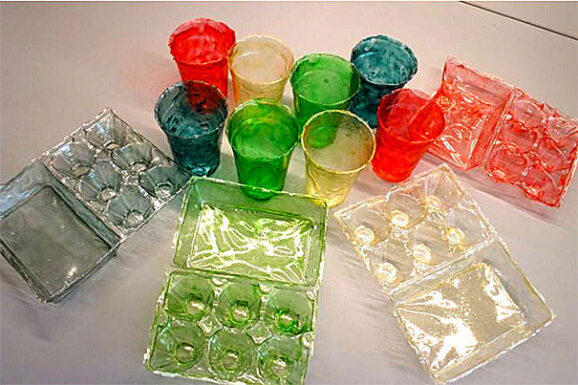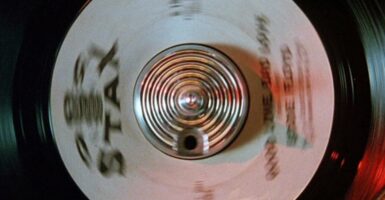New Plastics Alternative Might Help Save The Environment
This article is more than 2 years old

Scientists have brainstormed many ideas to help steer society away from its dependence on plastics, including lobbying for a ban on microbeads and brainstorming alternatives to objects such as water bottles. But given the ubiquity of plastic, this is no easy feat. As everyone knows by now, plastic doesn’t biodegrade, and is well on its way to screwing up the earth, the seas, and everything that lives on and in them. This week, Harvard researchers gave the world new hope in the fight against a plastics-shaped dystopia, and it comes from an unlikely source: shrimp shells.
Researchers from the Wyss Institute for Biologically Inspired Engineering have developed a new bioplastic derived from the shells of our tastiest crustacean friends. Specifically, the bioplastic is made from something called chitosan, which is produced by combining shrimp sheels with sodium hydroxide. Chitosan is currently used as a fungicide and pesticide, as well as an antibacterial agent. It’s also used in paint coating and to help prevent wine from spoiling. In other words, it’s one of those substances with countless uses. Better yet, it’s abundant in the natural world.
The new bioplastic is called “shrilk” because of its shrimpy origin and a protein derived from silk. The material takes only a couple weeks to break down. As it decomposes, it sheds nutrients, rather than toxins. In studies, researchers have used chitosan to help fertile soil, which provides the opportunity to use the new material to actually enrich the environment, rather than destroy it. In the video above, scientists grow a blackeyed pea in chitosan-enriched soil.
Shrilk is easy to make, and like plastic, is both hardy and transparent. Scientists believe they can use it in molds and mass-manufacturing, as well as bags and packaging. It makes sense, given that chitin helps form the tough shells of crustaceans, as well as the flexibility of butterfly wings.
The new discovery comes not a moment too soon. Plastics use and accumulation only continues to skyrocket. Humans use an estimated 500 billion plastic bags each year, and we’ve made more plastic in the past 10 years than all of the 1900s put together. We recycle about 3-5% of all of that. These plastics have become so widespread that they’ve formed an entirely new type of stone, and arguably a new geological era called the anthropocene. But maybe our mark on the environment doesn’t have to be quite so grim.












